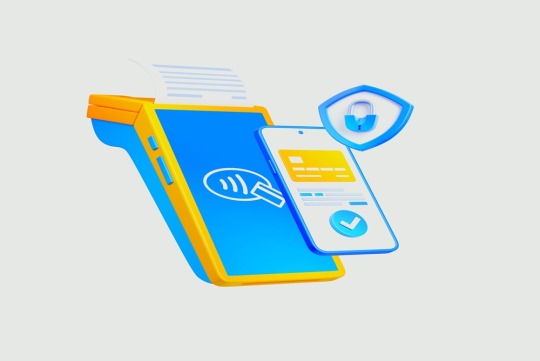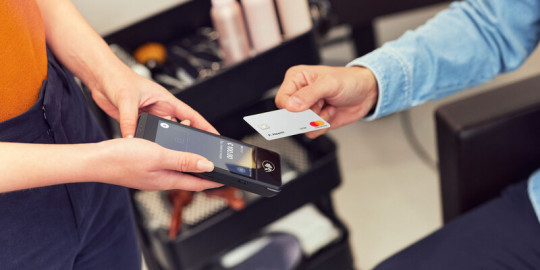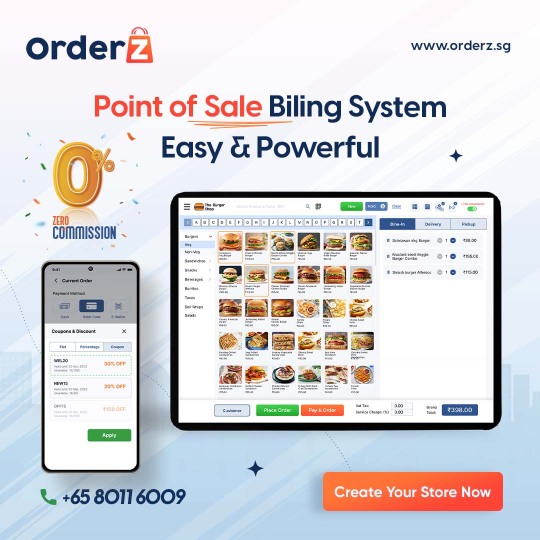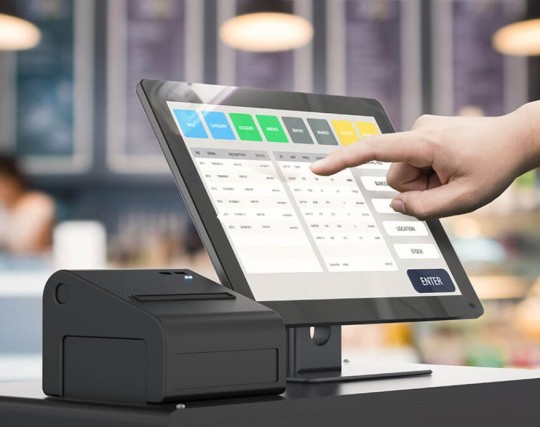#POS Software Singapore
Explore tagged Tumblr posts
Text
What is EMV Software? Key Components, Types, and Global Applications

In today’s digital age, the need for secure and efficient payment systems has become paramount. EMV (Europay, Mastercard, and Visa) technology has emerged as a global standard for secure credit and debit card transactions. EMV software plays a critical role in enabling this technology, ensuring that payment systems are secure, reliable, and compliant with international standards. This blog will explore what EMV software is, its key components, the different types of EMV software, and its applications across various regions, including Türkiye, Africa, Malaysia, UAE, China, Hong Kong, Algeria, Bulgaria, Ghana, Oman, Ethiopia, Kuwait, Nigeria, Finland, Zimbabwe, Kenya, Mexico, Qatar, Singapore, and Poland.
What is EMV Software?
EMV software is a specialized application that facilitates secure payment transactions using EMV chip technology. Unlike traditional magnetic stripe cards, EMV chip cards store data on a microprocessor chip, which generates a unique transaction code for every payment. This makes it nearly impossible for fraudsters to clone cards or steal sensitive information.
EMV software is integrated into payment terminals, point-of-sale (POS) systems, and ATMs to enable communication between the chip card and the payment network. It ensures that transactions are authenticated, encrypted, and processed securely. The software also supports compliance with EMV standards, which are mandated by card networks like Visa, Mastercard, and American Express.
Why is EMV Software Important?
Enhanced Security: EMV software reduces the risk of card-present fraud by using dynamic authentication for each transaction.
Global Compliance: It ensures that payment systems adhere to international EMV standards, enabling seamless cross-border transactions.
Customer Trust: Secure transactions build trust among consumers, encouraging the use of digital payments.
Fraud Prevention: By replacing static magnetic stripe data with dynamic transaction codes, EMV software significantly reduces the risk of data breaches and copyright fraud.
Key Components of EMV Software
EMV software is a complex system that relies on several key components to function effectively. These components work together to ensure secure, efficient, and compliant payment processing.
1. Chip Card Interface
The chip card interface is the foundation of EMV software. It enables communication between the EMV chip card and the payment terminal. This interface supports the exchange of data, including transaction details, authentication codes, and encryption keys.
2. Cryptographic Algorithms
EMV software uses advanced cryptographic algorithms to secure transaction data. These algorithms encrypt sensitive information, such as cardholder data and transaction amounts, to prevent unauthorized access. Common algorithms include RSA, AES, and SHA.
3. Transaction Processing Engine
The transaction processing engine is the core of EMV software. It handles the entire transaction lifecycle, from card authentication to authorization and settlement. This component ensures that transactions are processed quickly and accurately.
4. Authentication Protocols
EMV software supports multiple authentication protocols to verify the legitimacy of the card and the transaction. These include:
Static Data Authentication (SDA): Verifies that the card data has not been altered.
Dynamic Data Authentication (DDA): Uses cryptographic methods to validate the card and transaction.
Combined Data Authentication (CDA): Combines SDA and DDA for enhanced security.
5. Terminal Management System
The terminal management system allows businesses to configure, monitor, and update payment terminals remotely. This component ensures that terminals are always running the latest version of EMV software and are compliant with current standards.
6. Risk Management Tools
EMV software includes risk management tools to detect and prevent fraudulent transactions. These tools analyze transaction patterns, flag suspicious activities, and implement additional security measures when necessary.
7. Compliance Modules
Compliance modules ensure that the software adheres to EMV standards and regional regulations. These modules are regularly updated to reflect changes in industry requirements.
8. User Interface
The user interface (UI) is the front-end component of EMV software that allows merchants and customers to interact with the payment system. A well-designed UI ensures a smooth and intuitive payment experience.
Types of EMV Software
EMV software can be categorized based on its application, functionality, and deployment model. Below are the main types of EMV software:
1. EMV Payment Terminal Software
EMV terminal software is installed on payment terminals and POS systems. It enables these devices to read EMV chip cards, process transactions, and communicate with payment networks. This type of software is widely used in retail stores, restaurants, and other merchant locations.
2. EMV ATM Software
EMV ATM software is designed for automated teller machines (ATMs). It allows ATMs to accept EMV chip cards for cash withdrawals, balance inquiries, and other banking services. This software is essential for reducing ATM fraud and ensuring compliance with EMV standards.
3. EMV Mobile Payment Software
With the rise of mobile payments, EMV software has been adapted for smartphones and other mobile devices. This type of software enables contactless payments using Near Field Communication (NFC) technology. Examples include Apple Pay, Google Pay, and Samsung Pay.
4. EMV Card Issuance Software
EMV card issuance software is used by banks and financial institutions to personalize and issue EMV chip cards. This software encodes cardholder data onto the chip and generates cryptographic keys for secure transactions.
5. EMV Host System Software
EMV host system software is deployed on the backend of payment networks. It handles transaction authorization, settlement, and fraud detection. This software is critical for ensuring the smooth operation of large-scale payment systems.
6. EMV Testing and Certification Software
Before EMV software can be deployed, it must undergo rigorous testing and EMV certification to ensure compliance with industry standards. EMV testing software simulates real-world transaction scenarios to identify and resolve potential issues.
7. EMV Cloud-Based Software
Cloud-based EMV software is hosted on remote servers and accessed via the internet. This type of software offers scalability, flexibility, and cost-effectiveness, making it ideal for businesses with multiple locations or those looking to reduce hardware costs.
Applications of EMV Software Across Regions
EMV software and EMV Kernel is used globally to enhance payment security and streamline transaction processing. Below is an overview of its applications in various regions:
1. Türkiye
In Türkiye, EMV software is widely adopted in retail, hospitality, and banking sectors. The country has seen a significant reduction in card fraud since implementing EMV technology.
2. Africa
African countries, including Ghana, Nigeria, Kenya, and Zimbabwe, are increasingly adopting EMV software to combat fraud and promote financial inclusion. Mobile payment solutions powered by EMV technology are particularly popular in this region.
3. Malaysia
Malaysia has a well-established EMV infrastructure, with most payment terminals and ATMs supporting chip card transactions. EMV software is also integrated into the country’s popular e-wallet services.
4. UAE
The UAE is a leader in adopting advanced payment technologies. EMV software is used in retail, transportation, and government services to ensure secure and efficient transactions.
5. China and Hong Kong
China and Hong Kong have embraced EMV technology, particularly for contactless payments. EMV software is integrated into mobile payment platforms like Alipay and WeChat Pay.
6. Algeria
Algeria is transitioning from magnetic stripe cards to EMV chip cards, with EMV software playing a key role in this shift. The technology is helping to reduce fraud and improve payment security.
7. Bulgaria
Bulgaria has adopted EMV software across its banking and retail sectors. The country’s payment infrastructure is fully compliant with EMV standards.
8. Oman
Oman has implemented EMV software in its payment terminals and ATMs to enhance security and support the growing adoption of contactless payments.
9. Ethiopia
Ethiopia is in the early stages of adopting EMV technology. EMV software is being introduced to modernize the country’s payment systems and reduce fraud.
10. Kuwait
Kuwait has a robust EMV infrastructure, with most payment terminals and ATMs supporting chip card transactions. EMV software is also used in the country’s popular mobile payment apps.
11. Finland
Finland is a pioneer in digital payments, with EMV software widely used in retail, transportation, and online transactions. The country’s payment systems are known for their security and efficiency.
12. Mexico
Mexico has adopted EMV software to combat card fraud and improve payment security. The technology is widely used in retail, hospitality, and banking sectors.
13. Qatar
Qatar has implemented EMV software across its payment infrastructure to support secure and seamless transactions. The country is also exploring the use of EMV technology in government services.
14. Singapore
Singapore is a global leader in payment innovation, with EMV software integrated into its advanced payment systems. The country’s payment terminals and ATMs are fully EMV-compliant.
15. Poland
Poland has a well-established EMV infrastructure, with most payment terminals and ATMs supporting chip card transactions. EMV software is also used in the country’s popular mobile payment apps.
EMV software is a critical component of modern payment systems, enabling secure, efficient, and compliant transactions. Its key components, including chip card interfaces, cryptographic algorithms, and transaction processing engines, work together to ensure the integrity of payment data. With various types of EMV software available, businesses can choose the solution that best meets their needs.
As the adoption of EMV technology continues to grow globally, regions like Türkiye, Africa, Malaysia, UAE, China, Hong Kong, Algeria, Bulgaria, Ghana, Oman, Ethiopia, Kuwait, Nigeria, Finland, Zimbabwe, Kenya, Mexico, Qatar, Singapore, and Poland are benefiting from enhanced payment security and reduced fraud. By leveraging EMV software, businesses and financial institutions can build trust with customers, comply with international standards, and stay ahead in the ever-evolving world of digital payments.
0 notes
Text
Streamlining Retail Operations with SAP Business One
Retail management involves handling numerous tasks, from inventory control to customer service and financial management. SAP Business One provides a unified solution that simplifies these tasks and supports business growth.
Inventory management is a critical component of retail success. SAP Business One offers real-time visibility into inventory levels across multiple locations, allowing businesses to track stock efficiently. Automated reordering ensures that popular items are always in stock, reducing the risk of stockouts and overstocking. This helps retailers maintain optimal inventory levels and improve operational efficiency.
Customer relationship management is another area where SAP Business One excels. The platform’s CRM tools provide valuable insights into customer behavior and preferences, enabling retailers to offer personalized services and create targeted marketing campaigns. The integrated POS system enhances the customer experience by streamlining transactions and ensuring efficient checkouts.
On the financial side, SAP Business One simplifies cash flow management and accounting processes. Real-time financial monitoring and automated accounting features reduce manual errors and provide accurate financial reports. This comprehensive financial oversight supports better decision-making and helps businesses maintain a healthy cash flow.
Operational efficiency is improved through automation of routine tasks. SAP Business One automates processes such as order management and returns handling, allowing retailers to focus on strategic growth. The platform’s mobile access feature enables businesses to manage operations from anywhere, providing flexibility and convenience. Additionally, SAP Business One’s scalability ensures that it can adapt to the changing needs of a growing business.
By leveraging SAP Business One, small retailers can streamline their operations, enhance customer relationships, and improve financial management. The platform’s comprehensive features support business growth and operational excellence. For a smooth implementation, partnering with an experienced SAP consultant can help maximize the benefits of the software.
Article in courtesy of MPS Solutions - SAP Partner, SAP Software, Integrations, Customisation, ERP Solutions, IT Solutions, Singapore.
0 notes
Text
Suntoyo Singapore - Retail POS System vs. Restaurant POS System in Singapore
Selecting the appropriate Point of Sale (POS) system holds great importance for many businesses. Whether overseeing a retail store or a busy restaurant, the POS system chosen can greatly influence productivity, customer satisfaction, and financial performance. However, for various industries in Singapore to succeed in POS implementation, differentiating between retail POS systems and restaurant POS systems is necessary.
Discover the details of these two systems and determine which solution best suits your business requirements.

1. Functionality and Features
Retail POS Systems: These systems, designed primarily for retail operations, prioritise inventory management, sales tracking, and customer relationship management (CRM). In Singapore, where retail businesses flourish, a robust POS system is essential for managing diverse product lines, tracking stock levels accurately, and facilitating seamless transactions.
Restaurant POS Systems: On the other hand, restaurant POS systems are tailored to meet the unique demands of the food service industry. These systems typically include table management, menu customisation, split-check capabilities, and kitchen display systems (KDS) integration. In Singapore's vibrant culinary scene, where restaurants cater to diverse palates, an efficient POS system can streamline order processing and enhance overall dining experiences.
2. User Interface and Ease of Use
Retail POS Systems: Given the varied nature of retail transactions, simplicity and intuitive design are essential for retail POS systems. Employees must navigate the system swiftly to process sales, look up product information, and manage customer data efficiently. In Singapore, where retail staff turnover rates can be high, a user-friendly POS interface is essential for minimising training time and maximising productivity.
Restaurant POS Systems: In contrast, restaurant POS systems must accommodate the intricacies of table service, order modifications, and quick turnaround times. The interface should be optimised for fast-paced environments, allowing servers to input orders accurately and communicate seamlessly with kitchen staff. With Singaporeans' penchant for dining out, especially in bustling food hubs like Chinatown and Kampong Glam, a restaurant POS system must facilitate smooth operations to meet customer expectations.

3. Integration and Scalability
Retail POS Systems: For retail businesses in Singapore, seamless integration with other software solutions is essential for holistic business management. Whether it's integrating with accounting software for financial reporting or e-commerce platforms for omnichannel sales, a retail POS system should offer scalability and adaptability to accommodate evolving business needs.
Restaurant POS Systems: Similarly, restaurant POS systems should offer integration with reservation systems, online ordering platforms, and loyalty programs to enhance customer engagement and operational efficiency. In a city-state like Singapore, where food delivery services thrive and diners seek convenience, a restaurant POS system's ability to integrate with third-party platforms is vital for staying competitive.
4. Reporting and Analytics
Retail POS Systems: Retail businesses rely on data-driven insights to optimise inventory management, identify sales trends, and personalise marketing strategies. A robust reporting and analytics feature in a retail POS system can provide valuable metrics on product performance, customer demographics, and sales forecasts, empowering businesses to make informed decisions and drive profitability.
Restaurant POS Systems: Likewise, restaurant operators leverage data analytics to analyse menu performance, track dining preferences, and optimise pricing strategies. In Singapore's diverse culinary landscape, where diners are discerning and culinary trends evolve rapidly, a restaurant POS system's analytics capabilities can provide valuable insights for menu development, marketing campaigns, and operational improvements.
Conclusion
Both retail POS systems and restaurant POS systems play crucial roles in business operations, yet they vary in terms of functionalities, user interfaces, integration capabilities, and reporting features. Retail establishments in Singapore typically need a POS system focusing on inventory management, whereas restaurants seek a solution tailored for table service and order management. By recognising the distinctions between these two types of POS systems, companies can make well-informed choices to boost productivity, improve customer satisfaction, and attain long-term success in Singapore's competitive business environment.Visit Suntoyo to take the next step towards business efficiency and growth with reliable POS systems.
0 notes
Text
12 Tips for Implementing Self-Ordering Kiosks Successfully
The landscape of hospitality and retail is evolving rapidly, with self-ordering kiosks emerging as a technological game-changer. These electronic systems not only elevate the customer experience but also streamline operations for businesses. We will explore 12 tips to ensure the seamless integration of self-ordering kiosks in Singapore, highlighting their advantages over traditional electronic cash registers.
Understand Your Customer Base
Before delving into the world of self-ordering kiosks, it's essential to comprehend your customer base. Different demographics may have varying comfort levels with technology. Conducting surveys or market research helps identify the preferences and expectations of your target audience, ensuring the self-ordering kiosks align with their needs.

Choose the Right Technology
Selecting the right technology for your self-ordering kiosks is paramount. Look for kiosks equipped with user-friendly interfaces, high-resolution touchscreens, and efficient payment processing systems. Ensure the technology integrates seamlessly with your existing point-of-sale (POS) system, providing a modern alternative to traditional electronic cash registers.
Provide Clear Instructions
Making the transition to self-ordering kiosks smooth for customers requires clear and concise instructions. Implement intuitive user interfaces and provide step-by-step guides on navigating the ordering process. On-screen prompts and assistance ensure even first-time users can easily place orders without hiccups, bridging the gap between modern technology and customer expectations.
Offer Multilingual Support
Singapore's diverse cultural landscape necessitates multilingual support in your self-ordering kiosks. Providing language options ensures customers can comfortably interact with the kiosks in their preferred language, enhancing inclusivity and catering to the multicultural demographic.
Streamline Payment Processes
One of the key advantages of self-ordering kiosks is the speed of service. Ensure that the payment process is seamless and secure. Integrating various payment options, including contactless payments and mobile wallets, not only aligns with the digital payment trend in Singapore but also offers customers a convenient and efficient way to settle their bills, surpassing the capabilities of traditional electronic cash registers.
Implement Loyalty Programs
Encourage customer retention by integrating loyalty programs into your self-ordering kiosks. Reward customers for frequent visits or purchases, fostering a sense of loyalty and engagement. It enhances the customer experience and provides valuable data for future marketing strategies, a feature often absent in conventional electronic cash registers.
Staff Training is Essential
While self-ordering kiosks automate the ordering process, human interaction is still vital. Ensure that your staff is well-trained to assist customers with any issues that may arise during the ordering process. Staff should be knowledgeable about the kiosks' functionalities, payment procedures, and troubleshooting, creating a harmonious blend of technology and human touch.

Regular Maintenance and Updates
To keep your self-ordering kiosks running smoothly, schedule regular maintenance and updates. It ensures that any software bugs or security vulnerabilities are addressed. Staying up-to-date with the latest technology guarantees that your self-ordering kiosks remain efficient and secure, surpassing the capabilities of traditional electronic cash registers.
Monitor and Analyse Data
Use the data generated by the self-ordering kiosks to gain insights into customer preferences, popular menu items, and peak hours. Monitoring this data allows you to make informed decisions, optimise menu offerings, and improve overall operational efficiency, a functionality not possible with conventional electronic cash registers.
Consider Space and Design
Optimise the placement and design of your self-ordering kiosks to maximise their impact. Ensure they are strategically located to minimise congestion and provide easy access for customers. The design should align with your brand aesthetics and create a visually appealing and inviting space for customers to interact with the kiosks, unlike the static nature of traditional electronic cash registers.
Regulatory Compliance
Stay informed about local regulations and compliance standards related to self-ordering kiosks in Singapore. Adhering to legal requirements ensures a smooth operation and protects your business from potential legal issues. It includes compliance with data protection regulations, accessibility standards, and specific guidelines related to the food and beverage industry, a facet often overlooked with traditional electronic cash registers.
Seek Customer Feedback
Encourage customer feedback to improve the self-ordering experience. Implementing a feedback system allows customers to share their thoughts and suggestions, helping you identify areas for improvement. Responding to customer feedback demonstrates a commitment to customer satisfaction and can lead to positive word-of-mouth recommendations, a dynamic not typically associated with traditional electronic cash registers.
Conclusion
Implementing self-ordering kiosks is a strategic move that can revolutionise how businesses operate in the hospitality and retail sectors. Embracing this technology positions your business at the forefront of innovation, surpassing the capabilities of traditional electronic cash registers in Singapore's dynamic market. Contact Suntoyo Singapore to learn more about the self-ordering kiosk!
0 notes
Text
Inform and Engage: Digital Menu Board Solutions for Cafes in Singapore

Running a cafe in Singapore's vibrant F&B scene is no easy feat. You need to stand out from the crowd, entice customers with delicious offerings, and ensure a smooth and efficient service. In today's tech-driven world, digital menu board solutions for cafes in Singapore are becoming a game-changer.
Why Go Digital? Advantages of Digital Menu Boards
Traditional static menus might not be cutting it anymore. Here's how digital menu boards can elevate your cafe experience:
Enhanced Visual Appeal: Digital displays allow for high-resolution images and videos, showcasing your mouthwatering dishes in all their glory. Imagine tempting customers with a sizzling video of your signature pasta dish or a close-up of your decadent desserts!
Dynamic Content & Flexibility: Easily update your menu offerings on the fly. Add seasonal specials, highlight new dishes, and showcase promotions with ease. No more scrambling to reprint physical menus!
Boost Upselling & Cross-Selling: Strategically display high-margin items or combo deals alongside main courses. Digital menus allow for targeted promotions and upselling opportunities, increasing your average order value.
Improved Customer Experience: Digital menus are interactive and user-friendly. Customers can zoom in on menu descriptions or browse through various categories with ease. This can streamline the ordering process and reduce wait times.
Cost-Effective in the Long Run: While there's an initial investment, digital menus eliminate the need for frequent printing and updates. They also offer greater flexibility to showcase additional information like nutritional details or QR codes for online ordering.
Finding the Right Digital Signage Solution for Your Cafe in Singapore
Now that you're convinced about the benefits of digital menus, it's time to find the perfect solution for your cafe. There are several digital signage vendors Singapore offering a variety of options. Here are some key factors to consider:
Display Size and Resolution: Choose a display size that fits your space and ensures clear visibility for customers. High-resolution screens provide optimal image quality.
Software and Content Management: Look for user-friendly software that allows you to easily update menus and manage content. Consider features like scheduling promotions or integrating with online ordering systems.
Cost and Installation: Compare pricing options from different digital signage vendor Singapore. Factor in installation costs and ongoing maintenance requirements.
Technical Support: Ensure the vendor offers reliable technical support to assist with any issues you might encounter.
Additional Considerations & Popular Digital Signage Options in Singapore
Choosing the right digital menu board solution requires considering your specific needs and budget. Here are some additional points to ponder:
Menu Board Placement: Strategically position your digital menu boards for maximum impact. Consider placing them near the entrance, at cashier counters, or above seating areas.
Content Strategy: Plan engaging content for your digital menus. Keep text concise and easy to read, and utilize high-quality visuals to showcase your food.
Integration with Existing Systems: Explore options that integrate with your Point-of-Sale (POS) system for seamless order processing.
Now, let's explore some popular digital signage vendors Singapore and their offerings:
Pickcel: A leading Singaporean signage provider. They offer user-friendly software, a variety of display options, and cloud-based content management.
VizanSign: Specializes in digital signage solution Singapore for cafes and restaurants. Their systems offer features like displaying nutritional information and queue numbers.
Uniconnect Systems: Provides digital signage solutions with pre-designed templates for cafes. Their platform allows for remote content updates and easy customization.
These are just a few examples, and numerous other vendors cater to the Singapore market. Conduct thorough research, compare features and pricing, and don't hesitate to request demos before making your final decision.
By implementing a well-chosen digital menu board solution, you can transform your cafe's ambiance, enhance customer engagement, and ultimately boost your bottom line. Embrace the digital revolution and watch your Singaporean cafe thrive in today's competitive F&B landscape!
0 notes
Text
How to Increase Restaurant Sales: 7 Proven Strategies with APPZPOS F&B Integration Solutions
Are you seeking to boost your restaurant sales and attract more customers? In today's competitive F&B industry, leveraging advanced integration solutions can be a game-changer. Here are seven proven strategies, integrating F&B solutions, to elevate your restaurant sales:
Online Ordering and Delivery Integration: Embrace the convenience trend by integrating online ordering and delivery services into your restaurant operations. With platforms like APPZPOS, customers can effortlessly place orders through your website or mobile app, increasing accessibility and sales volume.
QR Ordering Integration: Simplify the ordering process for diners with QR code ordering. By incorporating QR codes on tables or menus, customers can scan and place orders directly from their smartphones. Utilize APPZPOS QR ordering integration to streamline the dining experience and encourage higher order frequency.
Self-Order Kiosk Integration: Enhance efficiency and reduce wait times by implementing self-order kiosks in your restaurant. Allow customers to browse the menu, customize their orders, and make payments independently. With APPZPOS self-order kiosk integration, you can provide a seamless ordering experience while maximizing sales opportunities.
Third-Party Integrations: By integrating with third-party solutions, POS systems can automate tasks, improve data accuracy, and provide a more comprehensive view of business operations. APPZPOS is partnered with leading food ordering platforms, delivery partners, payment gateways, accounting software, and mall management systems for better efficiency of your operations.
Menu Management Tools: Optimize your menu offerings with advanced menu management tools. With APPZPOS, easily update menus, add new items, and adjust pricing in real-time. Analyze sales data to identify top-performing dishes and strategically promote them to drive sales.
Integrated Loyalty Programs: Build customer loyalty and increase repeat visits with integrated loyalty programs. Reward customers for their patronage with discounts, rewards, or exclusive offers. With APPZPOS loyalty program integration, you can track customer behavior and tailor promotions to maximize engagement and sales.
Analytics and Reporting: Leverage data-driven insights to optimize your restaurant's performance and drive sales growth. With APPZPOS comprehensive analytics and reporting tools, track sales trends, monitor inventory levels, and identify opportunities for improvement. Make informed decisions to enhance efficiency, reduce costs, and maximize profitability.
By incorporating these seven strategies and leveraging the power of F&B integration solutions like APPZPOS POS System, you can elevate your restaurant sales and position your business for long-term success in today's competitive landscape.
About APPZPOS
APPZPOS is a leading POS solution provider in Singapore for all types of F&B businesses, retailers, and salons. We offer affordable and user-friendly digital ordering solutions, including POS System, Website Ordering, Table QR Ordering, Self Ordering Kiosk, Kitchen Display System(KDS), Queue Number Display, and Order Hub which is linked and seamlessly integrated.
Contact Us for a Free Demo
To see how APPZPOS can meet your business needs, call or WhatsApp us at (+65) 8310 9631 or email [email protected] to book for a demo session.
0 notes
Text
Android POS Market: A Compelling Long-Term Growth Story

Global Android POS Market Report from AMA Research highlights deep analysis on market characteristics, sizing, estimates and growth by segmentation, regional breakdowns & country along with competitive landscape, player’s market shares, and strategies that are key in the market. The exploration provides a 360° view and insights, highlighting major outcomes of the industry. These insights help the business decision-makers to formulate better business plans and make informed decisions to improved profitability. In addition, the study helps venture or private players in understanding the companies in more detail to make better informed decisions. Some are the key & emerging players that are part of coverage and have being profiled are Fujian Centerm (China), PAX Technology (China), Ingenico Group (France), Toast, Inc. (United States), A&B POS Solutions (United States), Cybersys (Kuwait), Square, Inc. (United States), Miva, Inc. (United States), Clover Network (United States), Shopify Inc. (Canada), Heartland Payment Systems (United States), Shenzhen Xinguodu Technology Co., Ltd. (China). Get Free Exclusive PDF Sample Copy of This Research @ https://www.advancemarketanalytics.com/sample-report/70769-global-android-pos-market-1 The growing prevalence of android phones across the globe as well as with increasing E-commerce activities has raised the demand for Android POS (Point-of-Sale). These POS Systems can be used in retail operations such as grocery stores, night clubs, cafes, smaller food installments, and many others. Android POS possesses a number of features such as table management, heck splitting functions as well as many other systems. Moreover, these android POS platforms can also be integrated with the number of third party software which will escalate the demand for android POS over the forecasting years.
The titled segments and sub-section of the market are illuminated below: by Type (Portable POS, Desktop POS), Application (Retail, Restaurant, Hospitality, Other)
Market Trends:
Increasing Hardware Independency with the Introduction to Purely Software Based Android POS
Introduction to End to End Encryption for minimizing Hacking Instances
Opportunities:
Growing Demand for Android Based Smartphones and Other Electronic Appliances
Complex Real-Time Monitoring and Definitive Mitigation of Automated Point of Sale Platforms
Market Drivers:
Improves Mobility and Flexibility of the Business Operations
Efficient Management of Android POS with improved Delivery Lead Time
Global Android POS market report highlights information regarding the current and future industry trends, growth patterns, as well as it offers business strategies to help the stakeholders in making sound decisions that may help to ensure the profit trajectory over the forecast years. Region Included are: North America, Europe, Asia Pacific, Oceania, South America, Middle East & AfricaCountry Level Break-Up: United States, Canada, Mexico, Brazil, Argentina, Colombia, Chile, South Africa, Nigeria, Tunisia, Morocco, Germany, United Kingdom (UK), the Netherlands, Spain, Italy, Belgium, Austria, Turkey, Russia, France, Poland, Israel, United Arab Emirates, Qatar, Saudi Arabia, China, Japan, Taiwan, South Korea, Singapore, India, Australia and New Zealand etc. Have Any Questions Regarding Global Android POS Market Report, Ask Our Experts@ https://www.advancemarketanalytics.com/enquiry-before-buy/70769-global-android-pos-market-1 Points Covered in Table of Content of Global Android POS Market:
Chapter 01 – Android POS Executive Summary
Chapter 02 – Market Overview
Chapter 03 – Key Success Factors
Chapter 04 – Global Android POS Market - Pricing Analysis
Chapter 05 – Global Android POS Market Background
Chapter 06 -- Global Android POS Market Segmentation
Chapter 07 – Key and Emerging Countries Analysis in Global Android POS Market
Chapter 08 – Global Android POS Market Structure Analysis
Chapter 09 – Global Android POS Market Competitive Analysis
Chapter 10 – Assumptions and Acronyms Chapter 11 – Research Methodology Read Detailed Index of full Research Study at @https://www.advancemarketanalytics.com/reports/70769-global-android-pos-market-1 Thanks for reading this article; you can also get individual chapter wise section or region wise report version like North America, Middle East, Africa, Europe or LATAM, Southeast Asia. Contact US : Craig Francis (PR & Marketing Manager) AMA Research & Media LLP Unit No. 429, Parsonage Road Edison, NJ New Jersey USA – 08837 Phone: +1 201 565 3262, +44 161 818 8166 [email protected]
#Global Android POS Market#Android POS Market Demand#Android POS Market Trends#Android POS Market Analysis#Android POS Market Growth#Android POS Market Share#Android POS Market Forecast#Android POS Market Challenges
0 notes
Text
Agiliux - Empowering Insurance Intermediaries for a Digital Future

The insurance industry has been undergoing a significant transformation, fueled by the integration of modern technologies and innovative processes. While larger companies have been at the forefront of this digital shift, smaller players face challenges in keeping up, and the rise of disruptive Insurtech startups poses a threat to traditional insurers. However, one startup is on a mission to revolutionize the insurance intermediary space and empower traditional players to stay competitive amidst the changing landscape. Meet Agiliux, a pioneering company offering tailored software for insurance brokers, agencies, and banks.
Agiliux’s journey began as an offshoot of their earlier startup, Second CRM. Having collaborated with a prominent Insurtech company across Southeast Asian countries, the founders gained invaluable insights into the transformative potential of technology in the insurance industry. Drawing from this experience, Agiliux was officially launched in May 2020, with a vision to empower intermediaries and reshape the insurance landscape.
The startup has spent the last three years in intensive product development and collaboration with their initial customers. They have successfully validated their products in multiple markets, serving 14 paying customers across Malaysia, Singapore, the Philippines, Thailand, and the UAE. Additionally, Agiliux is currently in talks with over 30 potential customers from ten countries across Southeast Asia and the Middle East.
Agiliux offers four innovative products tailored to different segments of the insurance industry:
1. Agiliux Retail: This versatile platform empowers insurance companies, brokers, and banks to streamline their retail channels, including direct sales through websites or mobile apps, chatbots, agency portals, POS apps, and embedded insurance partnerships. Agiliux Retail also provides an all-in-one customer support solution, equipped with a self-service portal or app for policy status checks, claims submissions, and policy renewals, supported by an omnichannel helpdesk system for efficient customer support across channels.
2. Agiliux Commercial: Designed for both Direct Insurance Brokers and Reinsurance Brokers, this comprehensive automation solution offers end-to-end automation, from risk coverage requests to generating quotes, debit notes, payment management, and integrated accounting. Additionally, Agiliux Commercial provides efficient regulatory reporting capabilities and more, empowering brokers to streamline their operations and improve efficiency.
3. Agiliux CRM: Providing a comprehensive automation solution for internal sales or external agents, Agiliux CRM enables insurers, brokers, banks, and independent agencies to streamline their operations, generate accurate quotes, and track policy and claims information. This helps them focus on delivering top-notch service and support to their clients.
4. Agiliux Chat: Revolutionizing the insurance experience, Agiliux Chat allows customers to buy policies and submit claims through an intelligent chat interface. Integrated with Agiliux Commercial and Agiliux Retail, this creates a unified ecosystem offering personalized recommendations and streamlining the entire insurance process.
With their sights set on becoming a game-changer in the industry, Agiliux targets Insurance Brokers in Malaysia, Singapore, the Philippines, Thailand, the UAE, and the UK. Their current focus is to empower these brokers with their solutions, but they plan to expand to include Banks (Bancassurance), small insurance companies, and independent agencies in the future. Eventually, they might also consider non-insurance players like car dealers and travel agencies who sell insurance.
The market potential for Agiliux is promising, with the Global Digital Insurance Platform Market projected to reach $278.51 Billion by 2030, growing at a CAGR of 11.3% (2021-2030), as per Allied Market Research. Within their target countries, they estimate a market size of approximately US$200 million per year, with around 3000 brokers spending an average of US$60k per year on digital solutions.
Behind Agiliux’s remarkable journey is a dedicated team of 20 members based in Malaysia and India, with plans to expand to 30 by the end of 2023 and further scale to 50 by 2024. The startup’s founders, Deep and Sarab, bring a wealth of experience and expertise to the table. Deep, with a background in Engineering and an MBA, and Sarab, with a strong foundation in Science and an MBA, have been committed to B2B or Enterprise SAAS solutions, particularly in Southeast Asia. Their previous ventures, Second CRM Cloud Office Automation and Agiliux Cloud Insurance, have laid the foundation for Agiliux’s growth trajectory.
In conclusion, Agiliux is on a mission to empower insurance intermediaries through their tailored software solutions, ensuring they remain relevant and competitive in the rapidly evolving insurance industry. With a focus on driving innovation and enhancing customer experiences, Agiliux is poised to play a pivotal role in reshaping the future of insurance intermediaries. Whether you are managing an agency or being a broker yourself and are curious about digitally transforming your operations, feel free to contact us at +44 2039894470 (United Kingdom), +603 8687 4433 (Malaysia) or +65 6304 8022 (Singapore) and drop us an email at [email protected].
0 notes
Text
Retail Business with NaviWorld's Integrated POS and Back Office Retail System

If you would like to Integrated POS retail system, then check out us at Naviworld.com.sg. It is one of the Integrated POS and Back Office Retail System. The integration of Point of Sale (POS) systems with back-office operations has become a game-changer for retailers. If you're looking for an Integrated POS and Back Office Retail System in Singapore, look no further than NaviWorld.com.sg.
The Power of Integration
An integrated POS and Back Office Retail System offers a unified approach to managing your retail business. It combines the front-end sales and customer interactions of your POS system with the behind-the-scenes processes of your back-office system. Here's how NaviWorld's solution can revolutionize your retail business:
Streamlined Operations: Bringing your POS and back-office systems together simplifies various processes, such as inventory management, sales tracking, and customer data. This streamlining of operations reduces manual effort, minimizes errors, and boosts efficiency.
Real-Time Insights: Access to real-time data is invaluable in retail. NaviWorld's solution provides you with comprehensive analytics, allowing you to monitor sales trends, track inventory levels, and understand customer behavior instantly.
Enhanced Customer Experience: An integrated system ensures a seamless and consistent customer experience. Whether a customer is shopping in-store, online, or through a mobile app, they receive the same high-quality service.
Inventory Management: Managing inventory is a constant challenge for retailers. NaviWorld's solution allows you to maintain optimal inventory levels, reduce stockouts, and minimize overstock, all while optimizing cash flow.
Why Choose Us
Expertise: We bring a wealth of experience in implementing and customizing integrated systems. Our experts understand the intricacies of the software and the unique requirements of the retail industry.
Customization: Every retail operation is unique. We tailor the solution to align seamlessly with your specific processes, ensuring it fits your business like a glove.
Local Knowledge: Operating in Singapore's dynamic retail market requires an understanding of local dynamics, regulations, and consumer behavior. We're well-equipped to cater to your specific retail needs.
Conclusion
NaviWorld's Integrated POS and Back Office Retail System is your path to retail excellence. By streamlining operations, providing real-time insights, enhancing customer experiences, and facilitating better decision-making, it empowers retailers to thrive in the competitive Singaporean market.
Invest in the future of your retail business today, and let us help you achieve your retail goals with our integrated solution. Join us on the journey to transforming your retail business and unlock its full potential with NaviWorld's Integrated POS and Back Office Retail System.
Read more info:- https://naviworld.com.sg/our-solutions/pos-retail-commerce-system/
Address: 140 Paya Lebar Road, #07-26, AZ @ Paya Lebar, Singapore 409015
Call: +(65) 6702 7820
0 notes
Text
The Importance of ERP Systems for SMEs and Retail Businesses

An ERP for SME is no longer a luxury but a necessity. Small and medium-sized enterprises face increasing complexities in managing operations, financials, and customer relationships. Implementing a tailored ERP system can streamline these processes, making businesses more efficient and competitive.
Discover more about how to select the best ERP for your SME by visiting ERP for SME.
Why Businesses Consider a Change of ERP Vendor
Choosing the right ERP vendor is critical for long-term success. However, businesses often find their current vendor lacks scalability, innovation, or customer support. Opting for a change of ERP vendor can offer new opportunities to modernize operations and integrate advanced features.
A change may include improved system performance, reduced operational costs, and enhanced reporting capabilities. If you're considering switching vendors, learn more at Change of ERP Vendor.
Best Practices for ERP Implementation in Singapore
ERP implementation is a significant undertaking that requires meticulous planning and execution. In ERP implementation Singapore, the focus is often on aligning the software with local business practices and compliance standards.
Key best practices include:
Conducting a detailed needs analysis.
Ensuring employee training for smoother transitions.
Regularly reviewing milestones to ensure project timelines.
A successful ERP implementation can improve productivity, customer satisfaction, and bottom-line results. For more insights, explore ERP Implementation Singapore.
Benefits of a POS Retail ERP System
Retail businesses operate in fast-paced environments where efficiency is key. A POS retail ERP system integrates point-of-sale functions with backend operations, streamlining everything from inventory to customer management.
Benefits of such a system include:
Real-Time Inventory Management: Track stock levels and reduce wastage.
Enhanced Customer Experiences: Provide personalized service with access to customer purchase histories.
Centralized Reporting: Consolidate data for better decision-making.
Retailers looking to stay ahead should explore the advantages of an integrated POS ERP system. Learn more at POS Retail ERP System.
Conclusion
Adopting the right ERP solution is vital for SMEs and retail businesses aiming to remain competitive in today’s market. Whether you're looking for an ERP for SME, planning a change of ERP vendor, or focusing on successful ERP implementation Singapore, the right approach can make a world of difference. Additionally, an integrated POS retail ERP system can provide a unified platform to enhance retail operations.
Take the first step toward optimizing your business by exploring these ERP solutions tailored to your needs.
0 notes
Text
ERP point of sale
Discover top-notch ERP Point of Sale (POS) solutions in Singapore. Elevate your business with efficient POS systems and inventory management software. Streamline sales processes, manage inventory seamlessly - all in one place. Boost your business today! Visit at: https://www.metrogroup.solutions/solutions/point-of-sale
0 notes
Text
A restaurant POS system is a software solution designed specifically for the food and beverage industry to manage operations, such as order taking, menu management, inventory tracking, payment processing, and staff management. This system helps restaurants streamline their processes, improve customer service, and enhance efficiency.
The POS system includes features like table management, which allows staff to easily assign tables to customers and track their orders, as well as payment processing, which accepts various payment methods including credit and debit cards, mobile wallets, and online payments.
Singaporean restaurants also use POS systems to monitor inventory levels, order ingredients, and track sales data to better manage their businesses. The use of POS systems is crucial in Singapore, as it is a popular dining destination with a thriving food and beverage industry. Implementing a reliable POS system can help restaurants enhance their operations, increase revenue, and deliver better customer experiences. Overall, a restaurant POS system like OrderZ can help streamline restaurant operations and improve overall efficiency, leading to better customer satisfaction and increased revenue.

1 note
·
View note
Text
Unlocking Retail Potential with SAP Business One
Small retailers often face challenges in managing inventory, finances, and customer relationships. SAP Business One offers a powerful solution to address these challenges, providing a comprehensive platform for streamlining retail operations and driving growth.
Effective inventory management is essential for retail success. SAP Business One delivers real-time visibility into stock levels, allowing businesses to monitor inventory across multiple locations. Automated reordering helps prevent stockouts, ensuring that popular items are always available. This proactive approach to inventory management helps retailers maintain optimal stock levels and reduce carrying costs.
Customer relationship management is another key strength of SAP Business One. The platform’s CRM tools provide valuable insights into customer behavior, preferences, and purchase history. Retailers can use this information to create personalized marketing campaigns, tailor promotions, and build stronger relationships with customers. The integrated POS system further enhances the customer experience by ensuring smooth transactions and efficient checkouts.
Financial management is streamlined with SAP Business One’s real-time cash flow monitoring and automated accounting features. Retailers can track their financial performance, generate accurate reports, and minimize manual data entry errors. This comprehensive financial oversight supports better decision-making and helps businesses maintain a healthy cash flow.
Operational efficiency is improved through automation of routine tasks. SAP Business One automates processes such as order management and returns handling, allowing retailers to focus on strategic growth. The platform’s mobile access feature ensures that businesses can manage their operations from anywhere, providing flexibility and convenience. Additionally, SAP Business One’s scalability ensures that it can grow with the business, adapting to changing needs and supporting long-term success.
In conclusion, SAP Business One equips small retailers with the tools needed to optimize inventory management, enhance customer relationships, and streamline financial operations. The platform’s comprehensive features support business growth and operational efficiency. For a successful implementation, partnering with an experienced SAP consultant can help maximize the benefits of the software.
Article in courtesy of MPS Solutions - SAP Partner, SAP Software, Integrations, Customisation, ERP Solutions, IT Solutions, Singapore.
0 notes
Text
Sage Ubs Inventory | Accounting Software Singapore

Sage UBS Point of Sales (POS) is designed specifically for rental and counter-sale activity management by small to large businesses. Using the POS keyboard and scanner, all transactions will be recorded at the checkout counter. You can obtain the following data by employing this software. These include information on the most recent inventory level, an analysis of the performance of sales staff, a loyalty program, an analysis of the peak customer period, an analysis of product versus margins, and an analysis of receivables.
If you are looking for Sage Ubs Inventory accounting software in Singapore, here is Ezaccounting offers the best Sage Ubs accounting Software with all functionalities.
The features of Sage UBS Point of Sales (POS) include the ability to view reports, print bar-code labels, and reprint cash receipts.
You can manage the database's visibility through security management.
Accurate records are kept of each sale. With the Sage UBS point of sale software, you can get complete information about the cashier counters, salespeople, product items, indicated POS counter, and mode of payment. You can track sales transactions to get information on deposits and withdrawals from your cash drawer. Simply enter the unique code, description, and other necessary information for each cashier, supervisor, credit card payment group, category, item, or counter in your maintenance level using this information.
Benefits of Sage UBS Point of Sales Retail management relies heavily on the software from Sage UBS Point of Sales. Retailers have access to the most important and relevant data they need to run their businesses effectively thanks to this software.
This software speeds up sales transactions and allows for customer trend analysis. It stores historical data.
0 notes
Text
Pos Software Solutions in Singapore | Juzapps.com

Searching for Pos software solutions? Juzapps.com offers Pos Software Solutions in Singapore, with a full range of solutions for retail and wholesale. We will find the best fit for your business needs by providing hardware and software solutions. For more deeply study us, visit our website.
POS Software Solutions in Singapore
0 notes